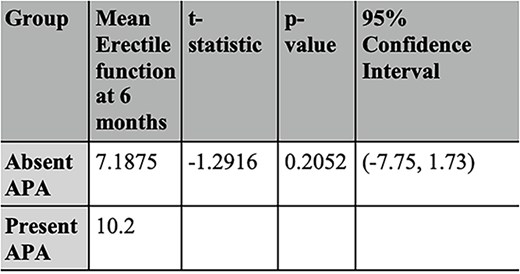-
PDF
- Split View
-
Views
-
Cite
Cite
A Al-Mitwalli, M Megson, W Lee, C Von Stempel, Z Tandogdu, D Ralph, EXPLORING MULTIPARAMETRIC MRI OF THE PROSTATE BEYOND DIAGNOSIS AND STAGING: IDENTIFYING ACCESSORY PUDENDAL ARTERIES, The Journal of Sexual Medicine, Volume 22, Issue Supplement_2, May 2025, qdaf077.101, https://doi.org/10.1093/jsxmed/qdaf077.101
Close - Share Icon Share
Abstract
Multiparametric MRI (mpMRI) of the prostate has become an integral step in the diagnosis and staging of localized prostate cancer. It is also utilized for surgical planning to guide the decision for nerve sparing surgery prior to robot assisted radical prostatectomy (RARP).
The arterial blood supply to the penis originatse from the pudendal artery in most patients, however anatomical variants, accessory pudendal arteries (APA) are present in almost 40% of the population. The functional significance and frequency of APA remain under debate. The dynamic contrast enhancement sequence (DCE) of the mpMRI offers the opportunity to identify APA in patients undergoing radical prostatectomy. We explore parameters on preoperative mpMRI that may have an impact on erectile function recovery.
The mpMRI for consecutive patients who underwent bilateral nerve spare RARP over a 6-month period were reviewed by uro-radiologist blinded to the surgical details, surgeon and functional outcomes for the patient.
Parameters recorded:
APA.
Change of value of enhancement at baseline and after contrast infusion of the prostate (ProRatio/time) and corpora (CorRatio/time) were measured.
Membranous urethral length
Out of the 37 patients included in this study 22 patients had APA on their preoperative mpMRI (11 right, 10 left and 1 bilateral). Twelve were branches of the obturator artery, six were branches of the inferior vesical artery and 4 from the anterior division of the internal iliac. The preliminary results show that there is difference in mean IIEF-EFD scores from patients with APA present and absent although the results from this small, numbered study did not amount to statistical significance.
We dichotomized the IIEF-EFD scores into <=15 and those >15. We carried out further Wilcoxon rank-sum tests compared with scores at 6 months. The results showed that CorRatio/time was significantly different between the groups (p = 0.03923), while ProRatio/time (p = 0.2933) did not show statistically significant differences.
This study shows that is possible to delineate vascular pelvic anatomy and identify APA from good quality preoperative mpMRI using the DCE sequence. Further research is needed to assess the functionality of APA.
None.




